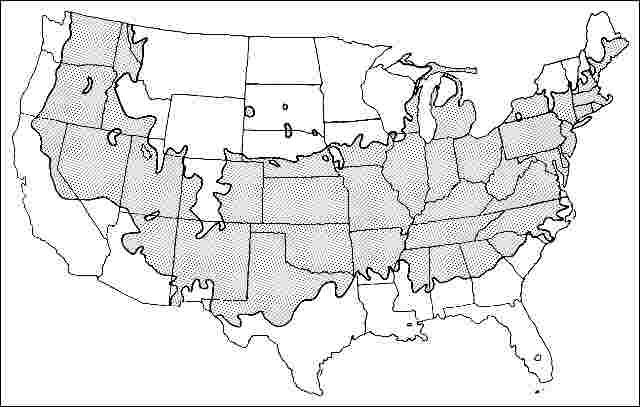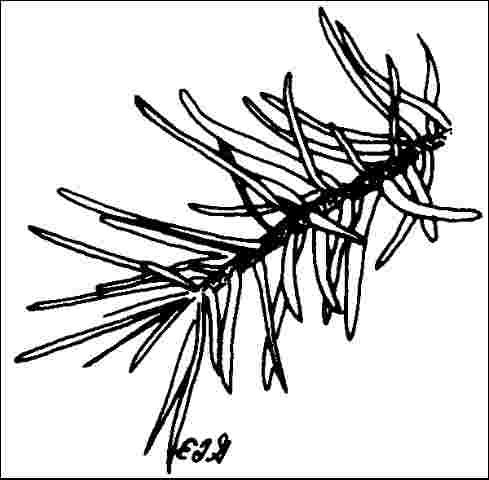Pseudolarix kaempferi: Golden Larch1
Introduction
This large but graceful, uncommon deciduous conifer reaches 40 to 70 feet in height with a straight trunk and a spread of 20 to 40 feet. Since it grows very slowly, it is usually not seen more than 30 to 40 feet tall. The silhouette is a rather open but symmetrical pyramidal shape with pendulous branch tips. The fine-textured needled foliage is 1.5 to 2 inches long and pale green above, blue/green below. The foliage turns a brilliant yellow in the fall for a short time but long enough to make a very striking landscape statement. The three-inch-long, upright cones are interspersed along the branches, and the reddish-brown bark is rugged and furrowed.

General Information
Scientific name: Pseudolarix kaempferi
Pronunciation: soo-doe-LAIR-icks KEM-fer-eye
Common name(s): Golden Larch
Family: Pinaceae
USDA hardiness zones: 5A through 7B (Fig. 2)
Origin: not native to North America
Invasive potential: little invasive potential
Uses: specimen; Bonsai
Availability: somewhat available, may have to go out of the region to find the tree

Description
Height: 40 to 70 feet
Spread: 20 to 40 feet
Crown uniformity: symmetrical
Crown shape: pyramidal
Crown density: open
Growth rate: slow
Texture: fine
Foliage
Leaf arrangement: spiral (Fig. 3)
Leaf type: simple
Leaf margin: entire
Leaf shape: needle-like (filiform), linear
Leaf venation: parallel
Leaf type and persistence: deciduous
Leaf blade length: less than 2 inches, 2 to 4 inches
Leaf color: green
Fall color: yellow
Fall characteristic: showy

Flower
Flower color: yellow
Flower characteristics: not showy
Fruit
Fruit shape: oval
Fruit length: 1 to 3 inches
Fruit covering: dry or hard
Fruit color: brown
Fruit characteristics: does not attract wildlife; not showy; fruit/leaves not a litter problem
Trunk and Branches
Trunk/bark/branches: branches droop; showy; typically one trunk; thorns
Pruning requirement: little required
Breakage: resistant
Current year twig color: green, brown
Current year twig thickness: thin
Wood specific gravity: unknown
Culture
Light requirement: full sun
Soil tolerances: clay; sand; loam; acidic; well-drained
Drought tolerance: moderate
Aerosol salt tolerance: unknown
Other
Roots: not a problem
Winter interest: yes
Outstanding tree: yes
Ozone sensitivity: unknown
Verticillium wilt susceptibility: resistant
Pest resistance: free of serious pests and diseases
Use and Management
The attractive bark, strong pyramidal shape, and wide-spreading branches make Golden Larch particularly attractive in the winter landscape. Its slow growth and attractive form makes it a popular choice for containers and for use as a bonsai. It can be used in residential landscapes since it grows at a slow rate. Plant it in the open so the form can be fully appreciated. Locate it far enough from sidewalks and buildings so lower branches will not have to be pruned.
Golden Larch should be grown in full sun on deep, rich, well-drained, moist acid soil where the trees can be protected from harsh, cold winds. The trees should not be planted in limestone soils and they are not tolerant of clay unless located on a slope where drainage would be excellent.
The cultivar `Nana' is a dwarf form. `Annesleyana' is a dense, dwarf form with weeping branches.
Propagation is by seed, although it is difficult to obtain fertile seed.
Pests and Diseases
No pests or diseases are of major concern.


